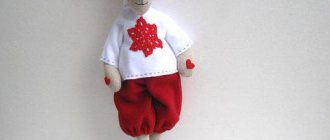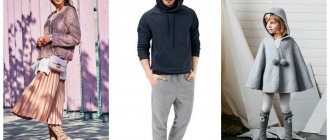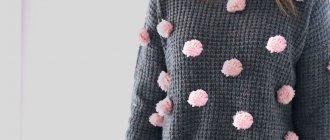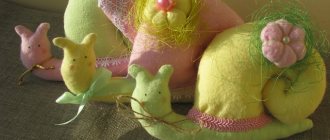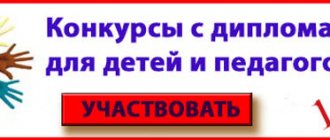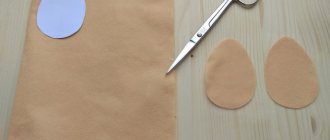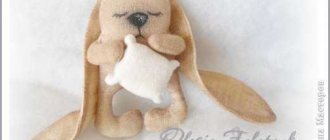Among craftswomen who sew soft toys with their own hands, various animals are quite popular: hares, owls, cats and bear cubs. These animals not only look cute, but also give room for creativity. Tilde dolls, knitted amigurumi figurines, textile products that combine both a toy and a soft pillow - all these options have their fans and are in great demand. To make hares and other animals you will need patterns.
Free patterns
Tilda, Hare tilde, Rabbit tilde, etc. - one of the most beloved and sincere Tildas. Repeatedly altered by craftswomen: sometimes the arms and legs are fastened with buttons, sometimes the ears are lengthened and shortened, the nose is higher and lower, the mouth is of different shapes - and, nevertheless, very recognizable 
It is not at all difficult to distinguish the Tilda bunny from the Tilda rabbit - just pay attention to their ears. The tilde rabbit's ears are downward, while the hare's ears stick out upward. Below you will find a large number of master classes and patterns that will help you easily make your own bunny or bunny.
Torso
The hare's body consists of three parts: two front and one back. Fold the fabric for the front pieces in half with the outer side facing in and transfer the template. Baste and cut, leaving allowances. Sew the front pieces. The next step is to transfer the template of the back part of the body to the wrong side of the fabric and cut it out, leaving allowances. Connect all the parts of the body, secure with pins and sew.
Do not sew up the paw holes or the turning hole.
Fold the fabric in half with the right sides facing in and transfer the paw pattern. Baste, cut, leaving allowances, stitch, turn right side out, iron and stuff. Insert the legs into the corresponding holes of the body and sew them up.
Sew the ears. turn them right side out, iron them and then you need to sew up the hole used for turning them inside out.
Turn the body right side out and stuff it with stuffing.
Sew the heels of the hind legs so that the hare can stand, fold the ears and sew them to the hare's head.
Hare by Tone Finnanger
Pattern 1
Pattern 2
Such a rustic bunny with a carrot hem - I really like it!
Fat hare Tilda
Patterns and visual assembly of the toy.
Face design and clothing
A hare's nose.
Naturally, everyone who sews such a toy wants to dress it up to their own taste. You will see for yourself what exactly suits your hare as soon as he is ready. Many craftsmen write that each tilde doll has its own character, and if the clothes that were originally planned do not fit (this happens!), you have to redo everything.
Paper hare craft using origami technique
To make such a hare, you will only need 1 sheet of paper (the child can choose the color at his own discretion) and scissors.
In progress:
- A sheet of paper is folded in half diagonally, the fold is smoothed and the excess part is cut off to form a square.
- Unfold the square and fold it diagonally again, but in a different direction.
- The resulting triangle is placed in front of you so that the widest corner is at the bottom.
- Bend the sharp corners of the triangle towards the middle. The result should be a square.
- Bend the bottom corners to the middle and also smooth them well. You should end up with a shape that looks like the top of an exclamation mark.
- The corners that are in the middle of the figure are folded towards the outer edge, that is, the right one to the right, and the left one to the left. The result was a “turn-down collar”.
- Open the square. There should be 4 layers of paper on both sides at the bottom. They open each edge so that there are 2 layers left on both sides, and smooth it out so that it looks like a hood.
- Bend the resulting workpiece in half outward, then turn the acute angle formed on the right to the middle so that it forms a right angle with the horizontal upper edge. Turn the workpiece over to the other side and do the same manipulations with the other corner. The result was a figure that looked like a boat.
- Draw a line from the lowest point of the “boat” to the middle of the right angle and fold the right long part along it. They do the same on the reverse side. These will be the ears.
- From the intersection point, lower a perpendicular to the bottom of the muzzle and bend the corner inward along this line. Then they bend it over to the other side in the same way.
- They open the muzzle and smooth it so that it looks like an open beak. The reverse side is smoothed in the same way. Then they open the workpiece again and fold it so that it forms a muzzle. (Proper folds will allow you to do this without problems.)
- The tip of the nose is bent on one side and the other, after which the corner is opened and tucked inward.
- Using the same bends, a tail is made.
- Open the ears and smooth them out a little.
It will be more interesting and easier for a child to make a paper hare craft using the origami technique if adults also get involved in the creative process.
Free master classes on sewing bunnies Tilda
Bunny in a dress and green coat
An interesting and photo-filled master class on sewing a tildo and clothes for it. Watch here
Bunny based on toys by T. Conne
Master class and patterns from Evgenia Ambartsumyan. Watch here
Step-by-step master class from NKALE
Watch here
Origin of the rosy toy
Tilda doll was born quite recently.
The first toy was invented by the Norwegian Tonne Finanger, who almost accidentally made an unusual rag doll. Calling her Tilda, the girl presented her creation to the world. And quite unexpectedly it found a strong response in the world of handicrafts. The name Tilda was firmly attached to subsequent toys that Toney created based on the same sketch. Long-armed and modest dolls have become popular and are growing in popularity.
The craftswoman opened mass production, and homemade toys made by needlewomen from all over the world began to follow suit.
Today, tildomania has taken over the whole world. In addition to girl angels, handmakers sew plush hares, cats and bears. But no matter what role Tilda appears in, seamstresses follow the mandatory rules for sewing a fashionable toy.
Classic signs of Tilda:
- Dark skin. The first toy was a little "tanned". Over time, the rule became stronger. Now all Tildas can boast of dark skin, which is made from fabric dyed in characteristic shades.
- Understatement. Another important feature is the modest expression of the face and dot eyes. The dolls' faces are never drawn in detail. It should only be intended. It is generally accepted that different people see different emotions on the face of the same doll.
- Long arms and legs. The characteristic lankyness is played up in toys of any type. Angels and animals have disproportionately large paws, which gives the style a special, recognizable charm.
- Outfits. Tilda style says that clothes should be as simple as possible. The dolls are dressed in pajama fabrics, rustic overalls and light sundresses. The fabric for clothing should be simple and natural. Small floral designs are welcome.
- Padding. Rag toys are stuffed with high-quality material. The character's torso should be filled tightly. The limbs are light and fluffy.
- Subject. Most dolls are given a specific style when sewing. There are Farmer Tildas, Home Angels, Scops Owls and Wedding Toys. “Pregnant” dolls have also become fashionable today.
- Tilda's wings have a symbolic meaning. She won’t be able to fly on miniature wings, but she can easily amuse her household.
Selection of model and material
In order for the Tilda doll to turn out correctly, you need to choose the appropriate material and pattern. Before starting work, determine what the theme of the craft will be.
In any case, the fabric for Tilda should be natural. It is optimal if it is cotton, calico, chintz or flannel. For the so-called Scops Owls, pillow toys, soft plush fabrics are ideal.
Tilda's main attribute is her outfit. The choice of clothes is approached responsibly, since it is the clothes that set the mood of the toy. Angels of comfort are usually dressed in sundresses and pajamas. You can also sew a soft jumpsuit for the doll.
You can decorate an outfit made from natural fabrics with denim, tulle, pieces of tulle and other details.
A prerequisite for a proper Tilda is rosy cheeks. You can make them using a regular red pencil, sharpening the lead and rubbing it with a cotton swab. Some craftswomen use cosmetics, for example, blush. This option looks no less romantic. The main thing is to practice doll makeup on a scrap of fabric so as not to spoil the finished toy.
Tilda doll pattern
In life size, the classic toy reaches 40-50 cm in height. This is the optimal size, but there are no clear rules for doll growth. Each craftswoman sews a toy of a size that fits perfectly into the interior.
To sew a life-size Tilda doll, you need to print the pattern on an A4 sheet. To get a larger toy, just double the image on your computer.
Making a toy is very simple. Step-by-step instruction:
- Select the size of the doll and print out the pattern of the desired size.
- Cut out the templates, leaving approximately 5 mm for seam allowances.
- The fabric is folded in half with the right side inward.
- The cut out patterns are pinned to the fabric.
- Outline the templates with a pencil or chalk.
- Cut out the folded fabric.
- Without separating the halves, the parts are stitched. Be sure to leave small holes for turning and stuffing.
- Turn the parts inside out and fill them with padding polyester or other light filler. The body should be full, and the limbs should be almost hollow.
- Sew the details. First, the arms are attached to the body. This can be done either by machine or by hand.
- The upper ends of the legs, which are also marked with a broken line in the figure, are inserted into the hole in the body, indicated by a dotted line on the pattern. The torso and legs are sewn up manually. Later the seam will be covered with the toy's clothing.
- The base of the doll is ready. Now all that remains is to dress her up.
Soft themed animals
Universal patterns will help you sew cute inhabitants of the house. Life-size textile dolls will be an ideal interior decoration if you choose the right theme and size for them.
Having determined the desired size of the doll, the pattern is adjusted to it on the computer and printed. When printing, keep in mind that you will need to add a few millimeters to the templates for seam allowances.
Christmas deer
The Tilda toy gains particular popularity on the eve of the New Year. A cat or horse in a knitted sweater is the perfect Christmas present. On the Internet you can find many wonderful “winter” toys that play with the Christmas theme. For example, Santa's reindeer, made in a unique style.
DIY women's trousers: step-by-step construction of a pattern
You can sew a New Year's deer from the same materials as a regular Tilda doll. You will need “dark” fabric, as well as brown, red and white material. The color scheme of the toy can be changed at your discretion.
A winter deer will need an insulated outfit that can be sewn or knitted. A scarf with cute tassels is made from a piece of felt. The character's hat is made from two identical triangles, stitched on both sides.
Small details, such as ears, socks and other accessories, are sewn from fabric of different colors. The more materials and colors are combined in a toy, the more complete its image will seem.
Dressy bunny with a secret
Hares are one of the most touching varieties of Tilda . Craftswomen make the most incredible bunnies and bunnies that have become real stars on the Internet. What roles have the big-eared characters tried on? On the Internet you can find a pattern for a groom hare, a sailor or a long-eared angel.
To build such a hero, you can use any Tilda pattern, adding ears to it. But to make the character proportional, it is better to cut it out according to a ready-made pattern.
You can dress this bunny in any outfit, for example, pajamas or jeans. The animals look very cute in light sundresses. Experienced needlewomen can try their hand at creating a full-fledged trouser suit for a cozy angel.
Cute yawning Scops Owls
Scops Owl, or sleepy angel, is a variation of the Tilda doll. This is a yawning character, certainly dressed in pajamas or a nightgown. Looking at such a toy, it is very difficult not to yawn. The purpose of the toy is comfort, which it certainly brings to any bedroom.
If you look into it, any Tilda can become a scops owl. It is enough to pay attention to yawning by fastening the doll’s palm to its mouth. However, to create a real sleepy angel, you need to use Tilda’s life-size Scops Owl pattern.
Paid master classes
Of course, there are a great many free master classes and patterns for creating bunnies with your own hands on the Internet; some needlewomen prefer high-quality paid photo and video master classes and patterns.
Below you will find a selection of Russian-language paid master classes.
Large game bunnies from Ekaterina Vinnichek
Cost: 300 rub. Buy here
The bunnies according to this MK will turn out to be just play bunnies, made of undyed natural fabric, with embroidered faces, they can be washed, and clothes can be taken off. The height of the hares is 42-43 cm.
Easter bunny
Cost: 350 rub. Buy here
A very detailed master class in which on 40 pages you will find patterns, 134 step-by-step photographs and a description of the process of sewing Easter bunnies - a boy and a girl. And also: how to “weave” a basket and exclusive gift wrapping, how to age fabric, how to make a bunny stand confidently on its feet and how to make its arms bendable...
Imitation of live coloring
Here's an interesting idea from Tilda's original book:
If you want to imitate the colors of a hare, you can paint spots on the fabric immediately after you have sewn all the pieces together.
Dilute the paints with water and do a test color on a small piece of fabric to see how well the paint will spread over the surface. Be careful when painting the hare's body and make sure that there is sufficient distance between the spots, otherwise they will merge into a single whole.
Ideas for inspiration
Bunnies from various authors. Just look at the images!
Maison de reve Dzigora Natalya
Konovalova Olga

